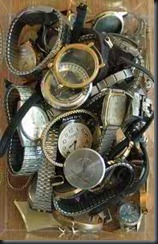Believe it or not it's quite easy to know if your business is going to survive. I'm sure that you've read that 80% of most new businesses go belly up in the first two years. When I read stats like this I shake my head and realize that it is obvious that most new business owners really don't understand or did not do any research to find out the validity of their enterprise. It's easy, let's get to it now.
In Chapter 1 we discussed setting up your own budget. I hope you've taken my advice and by now you are pretty much aware of the two factors that control your financial stability, Expenditures and Cash flow. If you don't seem to understand let me explain it to you this way.
Expenditures are expenses that you most pay at that moment. But what happens when you pay them by credit card? In an "Accural Accounting" format the expense is deducted off your earnings at the moment you post that purchase on the credit card. But the truth of the matter is that it should be deducted when you actually pay for that expense. When you use that type of accounting system you would be using a "Cash Based" accounting system. There are a number of tax breaks in using the "Accural System" but I strongly recommend you start with a "Cash Based" system because in this way you can see the actual "Cash Demands" of your business. "
Understanding "Cash Demand" will also help you understand your overall "Cash Flow". In a nutshell, "Cash Flow", especially during hard times, is what makes the wheels spin.
In Chapter 2 we discussed looking for the location, preparing estimated seed money. This chapter is really a continuation of Chapter 2. So I hope you haven't fallen asleep on me. I know you're dying to ask me some questions.
It is time to consider what kind of Business Tax Entity you will operate as.
Will you incorporate or be a sole proprietor?
Once again this is easy. If you own a home, or if you have other assets incorporate as an LLC.
Operate as a sole proprietor until you establish your business, then incorporate. Operating as a sole proprietor is easier for obtaining needed credit, tax and accounting purposes. Be sure that your lease can be transferred to the corporation in the future.
10/5/2010 Update: There is money being made available through small business stimulus programs but one of their requirements is for the business to be filed as a corporation….no LLCs. Check into this before making your decision. Remember you may always incorporate in the future.
Many banks and vendors might understand the fact that you are a sole-proprietor. When applying for credit or buying merchandise many times bank officials and vendors look at my application and with I interpret as a confused look ask me: "you're not incorporated?" I usually point out to them, and you should also, that you are not hiding behind a "corporate veil", you are putting your name and reputation on the line and you will not fail them! Besides, even if you are incorporated many will ask you for a "Personal Endorsement/Guarantee". Beware of this the day you incorporate. That defeats the whole purpose of incorporating to begin with. When at first you open a business you are "self-employed", once you are established and have employees and managers that generate income and make decisions in your behalf you will have established a business. At that point you have had to relinquish a part of that control and you must protect your personal assets from the business performance and decisions or events that can jeopardize you, such as getting sued, worker's compensation claims etc. Keep in mind that your goal is to build a business that will ultimately serve you. Not become a "slave to the trade" yourself. This is something that I will discuss in a future chapter when we go over "Just Why do We Want To Do This?"
I also feel that the tax advantages to a proprietorship are better. On a Schedule C you can deduct just about everything you can imagine. You may disagree with me, but it's definitely worked for me.
Instead of hiring a lawyer or accountant to set up your corporation, do it yourself. Here is a link that will help you immensely:
http://www.sunbiz.org/register.html
Presuming that you have found your location and have estimated the cost of renovations, you should prepare to negotiate your rent.
This should not be a daunting task. Most commercial leases are pretty standard. Go over it carefully and be on the lookout for clauses such as one that might pass the property taxes on to you. Be sure to get an idea of how much they have been from the landlord. The lease might also have services like garbage pickup and even the possibility to of adding "special assessments" to repair or "improve" the building. It might have a "COLI"-Cost of Living Increase which means that the rent will go up on a yearly basis. Be sure to get an exact percentage. The lease might even put a clause on charging you a percentage of sales exceeding a certain amount. Let's say that if you sold more than a million dollars in one year the landlord can charge you a percentage of that. And of course you will have to insure your business so that the property is not held liable if someone gets hurt in your business. Add that insurance cost, usually a once a year fee as part of your seed money. I strongly suggest that you don't discuss any of these clauses if you don't see them stipulated on the lease. Why on earth would you want to give the landlord any ideas?
So now you are ready to negotiate the rent. Make a note of this: When negotiating the rent try get as many free months as possible before starting to pay. Tell your perspective landlord that you need at least two months to set up the place. A way to do this is by making him/her enthusiastic about your business. Tell them how you are going to fix up the place and tell the adjacent business owners how you will help bring traffic to the area.
Now it's time to figure out the licenses needed.
Be warned, city governments are not helpful. I've noticed throughout the years that "government' has become big business. Meaning they are competing for your money as much as you are trying to make it. It's true that theoretically all the codes passed are to protect the public but for the most part these regulations are passed and enforced with the idea to generate revenues for the city. How else can a department justify their yearly allocation? And then those workers have to justify their personal incomes by enforcing everything as close to the letter as possible. Want an example? I once had a code enforcement inspector come with a ruler and measure a sign on a glass door and was told the letters were two inches larger than regulation!
When dealing with city officials try to be as to the point as possible without going into too much details. To start a conversation with one of these people is to get them to start thinking and you could never figure out in what direction they will take those thoughts in. One of the things you will need is an "Occupational License". Go in tell them what you are setting up. Be as vague as possible. If asked for numbers such as "amount of inventory" lowball the figure as much as possible. You're not lying. At this point you really don't know inventory fluctuates on a seasonal basis and then the truth of the matter is "what is the cash value of your inventory", this is the value of the inventory if you were to sell it back to the vendor that sold it to you. You might also be asked what the value of your office equipment and fixtures are. Once again, remember that they have depreciated the moment you received it. That laptop I recommended you purchase is now worth only 250.00 cash! This is important because a bill for "Intangible Tax on Assets" will be passed on to you in the future. By the way, you might be thinking of passing this on to your accountant, don't waste your money. He too is going to give a vague figure and charge you for the effort or give a figure that is going to help you get nailed. You must be the one in control!
You're also going to need a "Sales Tax" Certificate. Check this link out for the State of Florida Revenue.
http://dor.myflorida.com/dor/eservices/apps/register/
A sales tax certificate gives you sales tax exempt status when purchasing inventory or materials to build inventory. It does not mean you are sales tax exempt when purchasing personal items. It also gives you the right to collect sales tax for the state. This is obligatory when making sales to the public. And remember that if you don't collect the sales tax, you will have to pay for it yourself. Sales taxes are due by the 20th of the following month and penalties are high if not filed on time. Once again you don't need an accountant to figure this out.
1-Add up all your sales receipts tax included
2-Take total and divide by 1.07 this is the total amount of sales you had. Subtract it from the total of your receipts and that the tax you collected.
3-Multiply this amount by .025 this is your "commission" the state pays you for collecting and is deducted from the total amount due.
4-Post the amounts in the appropriate place on the coupon, send them the check!
So Ok, you have an idea of:
1-Your budget
2-The Location
3-Agenda/Computer to organize yourself
4-Preparation to go into lease
5-Licenses
6-All adding up to what your "Seed Money" is going to be. It sounds repetitive but these are figures that you must ingrain into your subconscious and must become second nature to you. Recap:
1-Fixing up the store
- Wall treatments: Paint
- Flooring: (If needed) Commercial carpeting or tiles(best choice) will landlord share cost?-shop for prices
- Signage: Shop for costs, be sure to include permit expenses.
- Rent; Review lease request first two months rent free (you'll probably get one)
- Insurance-Shop around
- Licenses-Most probably Occupational, Sales Tax
Hardware
- Phone equipment-Try to start with just one line. I recommend Supra Telecom.
- Alarm/surveillance equipment: More on this in future chapter.
Computers/Printers-I have discussed this in Chapter 3
- Software
- Credit card processor-Compare rates. As little out of pocket as possible. Watch out for extra fees. Online statements might reduce costs.
- Small refrigerator/microwave: A must to save on lunch money for both you and employees.
Supplies
- Paper, ink, shipping supplies, envelopes, company checks and deposit slips-Shop online to compare prices look for coupons from Staples, Office Max, Office Depot. Remember they all match each other's specials.
Fixtures-Shop around. Get what you need and think to hold for at least three years.
- Office furniture
- Displays
- Business bank account-Based on security, loan source or be sure for it to be free.
- Initial inventory purchase: We will discuss this make or break aspect.
Now let's get to the "Business Budget/Overhead" get the figures for the following:
1-Rent
2-Utilities
- Phones
- Electricity
- Water
3-Advertising
4-Employees (If any)
I hope you've been taking notes and using your agenda. This is going to be the end of this chapter. The "Rent" and "Utilities" amounts are relatively easy to figure out. I will be discussing setting up an employee schedule, salary expenses and opening your business bank account and getting you financed on my next chapter.





